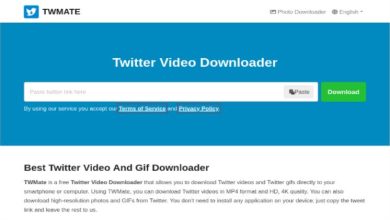
In the fast-paced world of mobile apps, simply acquiring users isn’t enough. To ensure long-term success, mobile app developers and businesses need to focus on keeping users engaged. The longer users stay engaged, the more likely they are to convert into loyal customers, share the app with others, and even make in-app purchases. But how can you measure engagement effectively? That’s where mobile app engagement metrics come in.
Tracking the right engagement metrics helps you understand how users interact with your app, what keeps them coming back, and what drives them away. Whether you’re running a gaming app, a productivity tool, or an e-commerce platform, understanding these metrics will help you optimize your user experience and maximize retention and conversions.
In this blog, we’ll dive into the most important mobile app engagement metrics you should be tracking to get a clear picture of user behavior and improve the performance of your app.
1. Daily Active Users (DAU) and Monthly Active Users (MAU)
What It Is:
- Daily Active Users (DAU): The number of unique users who engage with your app on a daily basis.
- Monthly Active Users (MAU): The number of unique users who engage with your app at least once during a 30-day period.
Why It Matters: DAU and MAU are the most common and fundamental metrics for measuring user engagement. They tell you how many users are actively using your app on a daily and monthly basis. A higher DAU/MAU ratio is often a sign of a highly engaged user base, while a lower ratio may indicate that users are not returning to the app as often as you’d like.
How to Use It:
- Track retention trends: Monitoring both DAU and MAU helps you identify if your user base is growing or shrinking.
- Calculate engagement ratio: A ratio of DAU/MAU indicates stickiness. A higher ratio suggests that users are more likely to engage with your app daily.
Ideal Benchmark: For a healthy app, the DAU/MAU ratio should ideally be above 0.2 (i.e., 20% of monthly users should be returning on a daily basis). The higher the ratio, the more “sticky” your app is, meaning users are regularly coming back.
2. Retention Rate
What It Is: Retention rate measures the percentage of users who continue using your app after their first visit, typically tracked over various time periods (Day 1, Day 7, Day 30, etc.). For example, Day 1 retention shows how many users return to your app the day after installation, while Day 7 retention and Day 30 retention measure how many users return after one week and one month.
Why It Matters: Retention rate is one of the best indicators of user satisfaction. High retention rates suggest that users find value in your app and are likely to stick with it long-term. Low retention, on the other hand, may signal that the app isn’t providing enough value or that the onboarding process isn’t effective.
How to Use It:
- Identify pain points: Low retention often occurs when users struggle with the app’s functionality or get frustrated during onboarding. Pinpoint these issues and fix them to improve retention.
- Evaluate the effectiveness of new features: Track how new features, updates, or changes affect user retention. If retention drops after an update, it could be a sign that something isn’t working.
Ideal Benchmark:
- Day 1 Retention: A healthy mobile app typically sees around 40-60% of users return the next day.
- Day 7 Retention: A good retention rate at Day 7 is around 20-30%.
- Day 30 Retention: For long-term engagement, aim for 10-15% retention at 30 days.
3. Session Length and Session Interval
What It Is:
- Session Length: The amount of time a user spends on your app during each session.
- Session Interval: The amount of time between two consecutive app sessions (how often users return to your app).
Why It Matters: Both session length and session interval are important because they give you an idea of how engaged users are when they open your app and how frequently they return. If session lengths are short, it could indicate that users are not finding enough value in the app to stay engaged. Similarly, if session intervals are long, users may not be motivated to return frequently.
How to Use It:
- Optimize user experience: If your session lengths are short, consider adding more engaging content or features that encourage users to stay longer.
- Measure user interest: Longer session lengths and shorter intervals generally indicate high engagement, so aim to encourage this behavior through features like push notifications, new content, or social interaction.
Ideal Benchmark:
- Session Length: For most apps, a good session length is between 3-5 minutes. For games or highly engaging apps, session lengths could be longer (up to 15-30 minutes).
- Session Interval: Ideally, you want users to return every 1-3 days. For certain types of apps (like games or social media), you might want users to return multiple times per day.
4. Lifetime Value (LTV)
What It Is: Lifetime Value (LTV) measures the total revenue a user will generate during their time using the app. LTV is a critical metric for app developers, especially if you’re monetizing through ads, in-app purchases, or subscriptions.
Why It Matters: LTV helps you understand how much each user is worth over time, which in turn helps you decide how much you should spend on user acquisition. If LTV is higher than customer acquisition cost (CAC), your app is profitable and sustainable.
How to Use It:
- Evaluate ROI: LTV can be used to compare the profitability of different marketing channels or user acquisition campaigns. If a certain channel has a high LTV, it’s likely a good investment.
- Segment users: Track LTV across different segments (such as active vs. inactive users) to understand which user groups are most valuable and focus your engagement efforts on them.
Ideal Benchmark: LTV varies widely by app type, but for most apps, a general rule of thumb is that LTV should be 3-5 times the cost to acquire a user (CAC). This ensures that your app is generating more revenue than it costs to acquire users.
5. Churn Rate
What It Is: Churn rate measures the percentage of users who stop using your app over a certain period of time. High churn rates indicate that users are abandoning your app at a high rate, while low churn rates suggest that users are sticking around.
Why It Matters: Churn is the opposite of retention—if users are churning quickly, it means you’re losing them before they have a chance to fully engage with your app. A high churn rate is often a red flag and indicates that something isn’t working (e.g., poor app performance, bad user experience, lack of compelling features).
How to Use It:
- Reduce churn: Monitor churn rates to identify trends and causes. If users are leaving after certain events (like app updates or a specific level), take action to fix the problem.
- Improve user engagement: By tracking churn, you can develop strategies to retain users, such as in-app messaging, new content, or loyalty rewards.
Ideal Benchmark: The ideal churn rate varies by app type, but for most apps, 5-7% monthly churn is considered acceptable. However, the goal is always to reduce churn over time by improving user experience and engagement.
6. Push Notification Engagement Rate
What It Is: Push notification engagement rate refers to the percentage of users who interact with push notifications. This could include opening the app or taking a specific action in response to a notification.
Why It Matters: Push notifications are a powerful tool for keeping users engaged and reminding them of your app’s value. If push notifications aren’t getting good engagement, it could mean they’re too frequent, irrelevant, or poorly timed.
How to Use It:
- Optimize notifications: Track which types of push notifications get the most engagement (e.g., reminders, promotions, new content) and use that data to optimize your messaging.
- Personalize messages: Personalize notifications based on user behavior to increase engagement rates.
Ideal Benchmark: Push notification engagement rates typically range between 2-10%, depending on the type of app and the relevance of the notifications. Aim for a higher engagement rate by sending personalized, timely, and valuable notifications.
7. In-App Purchases (IAP) and Revenue Metrics
What It Is: In-app purchases and revenue metrics track the total revenue generated through purchases made within the app. This includes subscriptions, one-time purchases, or virtual currency.
Why It Matters: If your app relies on monetization through in-app purchases or subscriptions, tracking IAP metrics is essential. High engagement usually leads to higher IAP conversion rates, but it’s important to track how users are spending money in your app to optimize your monetization strategy.
How to Use It:
- Monitor conversion rates: Track how many users convert to paying customers, which in turn can give you insights into how well your app is monetizing.
- Test pricing models: If you’re offering in-app purchases, track how different pricing strategies or offers affect revenue and user behavior.
Ideal Benchmark: For successful apps, 1-5% of users typically make in-app purchases, though this can vary by app category and monetization model.
Conclusion
Tracking the right mobile app engagement metrics is crucial for understanding how users interact with your app and how to optimize the user experience to keep them coming back. By closely monitoring DAU, MAU, retention rate, session length, churn rate, LTV, and push notification engagement, you can pinpoint areas for improvement, refine your app’s features, and ultimately drive higher engagement and revenue.
Remember, engagement is not a one-size-fits-all concept—each app will have different benchmarks depending on its genre, target audience, and monetization strategy. The key is to continuously measure, analyze, and iterate based on your app’s unique performance data. By doing so, you can build a more engaging, sticky, and profitable mobile app experience.




